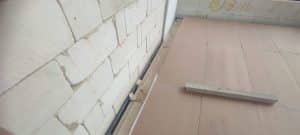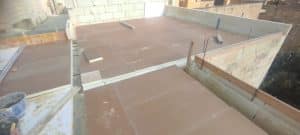If you’re planning any form of flooring work during Malta’s hot months, understanding screed curing time in summer is absolutely essential. The temperature, humidity, and air flow all affect how your screed performs—and if curing isn’t done right, it can lead to costly delays, cracking, and even complete failure of your flooring project.
So whether you’re a contractor, a homeowner, or a developer planning a turnkey construction project, knowing the specifics of screed behaviour under summer conditions will save you money, stress, and time.
In this blog, we’ll break down what “curing” really means, why summer poses unique challenges in Malta, and what you can do to ensure your screed flooring performs optimally. We’ll also tell you where you can get the right screed services locally and how to get in touch with professionals who can do the job right.
What Is Screed Curing and Why It Matters | Screed Curing Time In Summer
Before diving into the impact of summer heat, let’s clarify what screed curing really involves.
Screed is a cement-based mix that’s applied over a subfloor to create a smooth, level surface for flooring. Once applied, screed needs to cure—a process that allows the cement to hydrate and gain the strength it needs to support tiles, wood, resin, or microcement finishes.
Curing is not just “drying.” It’s a chemical process that requires moisture retention for proper strength development. If screed dries too fast (as it often does in hot Maltese summers), it can lead to:
Cracks
Dusting or surface weakness
Uneven strength distribution
Delamination or separation from the subfloor
In short, improper curing compromises the long-term integrity of your floor.
That’s why understanding screed curing time in summer is so vital. The seasonal climate has a direct impact on how well your floor performs—especially in the early days after application.
How Summer Weather Affects Screed Curing Time in Malta | Screed Curing Time In Summer
Malta’s summer climate is hot, dry, and often windy. Average daytime temperatures hover around 30°C, with spikes into the mid-40s not uncommon. This creates three main issues for screed:
1. Accelerated Moisture Loss
Hot, dry conditions cause the screed to lose water too quickly, especially if not protected. Since curing requires moisture, this premature evaporation weakens the cement’s bonding process.
2. Increased Risk of Cracking
As moisture evaporates rapidly, shrinkage cracks may develop. These aren’t just cosmetic—they compromise structural performance and can lead to tile lifting or failure of your final floor finish.
3. Shorter Workability Window
In the heat, the working time before screed begins to stiffen is drastically reduced. This means installers have less time to level, smooth, and finish the screed properly, increasing the risk of errors.
So, what’s the ideal screed curing time in summer?
Under standard indoor conditions (around 20°C), traditional sand and cement screed cures at a rate of 1mm per day, up to a thickness of 50mm. But in summer, this can be misleading.
In practice, you need to extend protection measures, not shorten the curing period. Even if the surface looks “dry,” the internal curing process may be incomplete.
Proven Tips to Manage Screed Curing in Malta’s Hot Climate | Screed Curing Time In Summer
To ensure proper screed curing time in summer, local contractors and builders in Malta follow some proven best practices:
1. Use Curing Agents or Membranes
Spray-on curing compounds can create a film over the screed, locking in moisture. Alternatively, a polythene sheet can serve the same purpose. This method helps maintain an even moisture level, allowing internal curing to continue undisturbed.
2. Keep It Damp (But Not Wet)
Light misting of water or using damp hessian cloths in the first 3–7 days can help. Avoid puddling or excessive wetting, which may damage the surface.
3. Work in the Early Morning or Late Afternoon
Plan your screed pour for cooler parts of the day. Avoid direct sunlight during application. Shading or temporary shelters may be needed for outdoor screeding jobs.
4. Control Internal Conditions
For indoor applications, air conditioning or dehumidifiers may actually harm the curing process. Instead, seal off the area and maintain natural ventilation where possible.
5. Choose Fast-Drying or Modified Screeds
Some screeds are designed to cure quicker without sacrificing strength. If time is critical, ask about polymer-modified screeds or calcium sulphate-based screeds, which offer faster turnaround with fewer risks.
Just make sure you don’t confuse “fast drying” with “fast curing.” They’re not the same!
How Long Should You Wait Before Walking, Tiling, or Flooring? | Screed Curing Time In Summer
So, what is the real screed curing time in summer when planning your project timeline?
Here’s a typical breakdown for traditional sand and cement screed at around 50mm thickness in Maltese summer conditions:
| Activity | Recommended Wait Time in Summer |
|---|---|
| Light foot traffic | 48 hours |
| Application of floor finishes | 28–35 days |
| Full cure for heavy loads | Up to 60 days |
For fast-drying screeds, the curing time can be reduced to as little as 3–7 days for floor covering, depending on the product. But always follow the manufacturer’s recommendations.
Pro tip: Never install tiles or finishes just because the surface “feels” dry. Use a moisture meter or consult your screed supplier.
Indoor vs Outdoor Screed Curing in Summer | Screed Curing Time In Summer
Malta’s bright summer skies are both a blessing and a curse. When working outdoors, your screed is directly exposed to UV rays, wind, and fluctuating temperatures, making it much harder to maintain consistent curing.
Outdoor screeds require even more attention:
Use shading tarps or screens to block direct sun
Apply a curing membrane immediately after screed is laid
Extend protection time by at least 7 days
Avoid heavy foot traffic until the screed reaches acceptable hardness
For indoor screeds, you’ll still need to watch out for air conditioning units, open doors, or fans that might dry the surface prematurely. Close off the area as much as possible during curing.
Costs for Screed Application and Curing Services in Malta | Screed Curing Time In Summer
If you’re budgeting for screed work in summer, factor in not only the material and labour but also protection measures to ensure a proper cure.
Here’s a rough cost guide in euros:
| Service | Estimated Price Range (€) |
|---|---|
| Traditional screed application (per m²) | €18 – €25 |
| Fast-drying screed (per m²) | €25 – €35 |
| Curing membranes or compounds | €2 – €5 per m² |
| Site setup for sun protection | €150 – €400 (one-time) |
While it may seem tempting to skip curing protection to cut costs, the long-term risk to your floor is far more expensive. Cracked screed, lifted tiles, or uneven finishes can lead to full reinstallation—costing thousands in repairs.
Need help choosing the right screed or want a professional team to handle your job from start to finish?
👉 Contact us here and let’s talk about your project.
Real-Life Example: A Screed Disaster in Sliema (And What It Teaches) | Screed Curing Time In Summer
In July 2023, a residential renovation in Sliema hit major delays when the contractor failed to account for Malta’s summer heat. The screed was laid at noon, in full sun, with no membrane or shade. Within 48 hours, visible cracking appeared, and by day 5, it had pulled away from the subfloor.
The floor had to be completely removed, the substrate cleaned, and a new screed laid—this time with proper curing care and scheduling. The total setback cost the client over €6,000, not to mention a 4-week delay.
This isn’t a rare case—it’s an important reminder that screed curing time in summer isn’t a luxury; it’s a technical necessity.
Check Out Our Screed Services in Malta | Screed Curing Time In Summer
Looking for expert screed installers who understand the Maltese climate and apply best practices for curing in every job?
👉 Check out our screed services in Malta to learn more about our approach, materials, and guarantees.
Whether it’s a small apartment or a large turnkey construction project, we’ve got the tools, team, and technical knowledge to ensure a flawless finish—no cracks, no delays, just solid results.
How to Test Screed Readiness Before Installing Floor Finishes | Screed Curing Time In Summer
Even when it looks dry, screed may still be holding internal moisture that can ruin your final finish. This is especially true in summer, where surface drying happens faster than curing. So how can you be sure your screed is truly ready?
Use a Moisture Meter
A digital moisture meter can give you a real-time snapshot of residual humidity. The most common method used in Malta is the CM test (Calcium Carbide Method). It involves taking a sample of the screed and placing it in a sealed vessel with carbide powder. The resulting gas pressure reveals how much moisture is left inside.
✅ Target value for most flooring:
≤ 2% CM for cement-based screeds
≤ 0.5% CM for calcium sulphate screeds
If you’re unsure, get a professional to test it for you. Don’t guess.
The Plastic Sheet Test (Basic DIY Option)
If you don’t have access to equipment, tape down a piece of clear plastic sheeting (about 1m²) on the screed and seal all edges. Leave it for 24–48 hours. If condensation forms underneath, your screed isn’t ready.
Traditional vs. Fast-Drying Screeds: Which Is Better for Summer? | Screed Curing Time In Summer
When curing during the hot Maltese summer, choosing the right type of screed can make or break your schedule and results.
Let’s compare the two main types:
| Feature | Traditional Screed | Fast-Drying Screed |
|---|---|---|
| Cure Time | 28–60 days | 3–14 days |
| Thickness Range | 50mm+ | 10–50mm |
| Best Use | Large indoor/outdoor areas | Tight schedules, bathrooms, renos |
| Summer Risk | Higher (requires protection) | Lower (formulated for fast cure) |
| Cost (Malta avg) | €18–25/m² | €25–35/m² |
Fast-drying screeds are engineered with polymers or accelerants to reduce water dependency and enhance rapid strength gain. This is particularly useful for bathrooms, kitchens, or small renovations where delays are costly.
However, don’t assume “fast” means “zero-care.” Even fast-drying screeds need appropriate curing practices—especially in summer heat.
The Role of Underfloor Heating and Insulation in Screed Curing | Screed Curing Time In Summer
If you’re installing underfloor heating (UFH), your screed curing time in summer needs even more planning.
Why? Because Heat from Below Changes Everything
UFH systems are embedded within or below the screed. That means the screed is subject to thermal expansion and contraction during operation, which can lead to cracking if not properly cured.
Key Tips:
Wait at least 7 days after screed application before initiating the UFH commissioning process.
Slowly ramp up the temperature by 5°C per day (up to max), and down the same way.
Never operate UFH during the early curing period—it will dry the screed too quickly and lead to stress cracks.
Insulation Considerations
Using thermal insulation boards underneath your screed helps reduce heat loss and makes underfloor heating more efficient. But poorly installed insulation can cause:
Uneven thickness
Air gaps, leading to inconsistent drying
Bouncing floors if not compacted correctly
Always go with an experienced installer who understands Malta’s climate and construction style.
Frequently Asked Questions About Screed Curing Time in Summer | Screed Curing Time In Summer
Let’s wrap up with some of the most common queries we get from our Maltese clients during the hot season.
❓ Can I install tiles after 7 days?
Only if you’ve used a fast-drying screed and confirmed moisture levels are below the required threshold. For traditional screed, wait 28 days minimum.
❓ Does adding water after laying help?
No. Surface rewetting can cause dusting and weaken the bond. Proper curing involves moisture retention, not reapplication.
❓ What if it rains suddenly during curing?
Rain can damage uncured screed. Always cover outdoor jobs with tarps or protective sheeting. Once set (after 24–48 hours), light rain won’t harm it—but pooled water should still be avoided.
❓ Is summer a bad time to lay screed?
Not at all! In fact, Malta’s summer can be a great time to screed if handled correctly. With the right precautions, protection, and timing, curing can proceed efficiently without delays from moisture or cold.
Final Thoughts: Getting the Screed Right the First Time | Screed Curing Time In Summer
If there’s one takeaway from this article, it’s this:
👉 Don’t underestimate the importance of proper screed curing time in summer.
The combination of heat, dry air, and UV exposure in Malta’s hot season presents real challenges—but with professional know-how, you can achieve a strong, flawless base for any type of floor.
From residential homes in Naxxar to commercial projects in Valletta, we’ve helped clients across Malta avoid costly screed issues by planning ahead, using the right products, and respecting the curing process.
✅ Contact Us for Expert Screed Help in Malta | Screed Curing Time In Summer
If you’re planning a summer renovation or building project, let our team guide you through the screed curing process the right way.
Whether it’s for a single room or an entire turnkey construction development, we’ve got the tools and local knowledge to ensure your screed is perfect from day one.
📞 Reach out now via our contact page:
👉 https://kibitec.com/contact-us/
🚧 Check Out Our Screed Services in Malta | Screed Curing Time In Summer
Want to learn more about our screed systems, pricing, and process?
✅ Check out our screed service page here for detailed info on the materials we use, recommended applications, and why Maltese homeowners and developers trust Kibitec for high-quality screed work.




